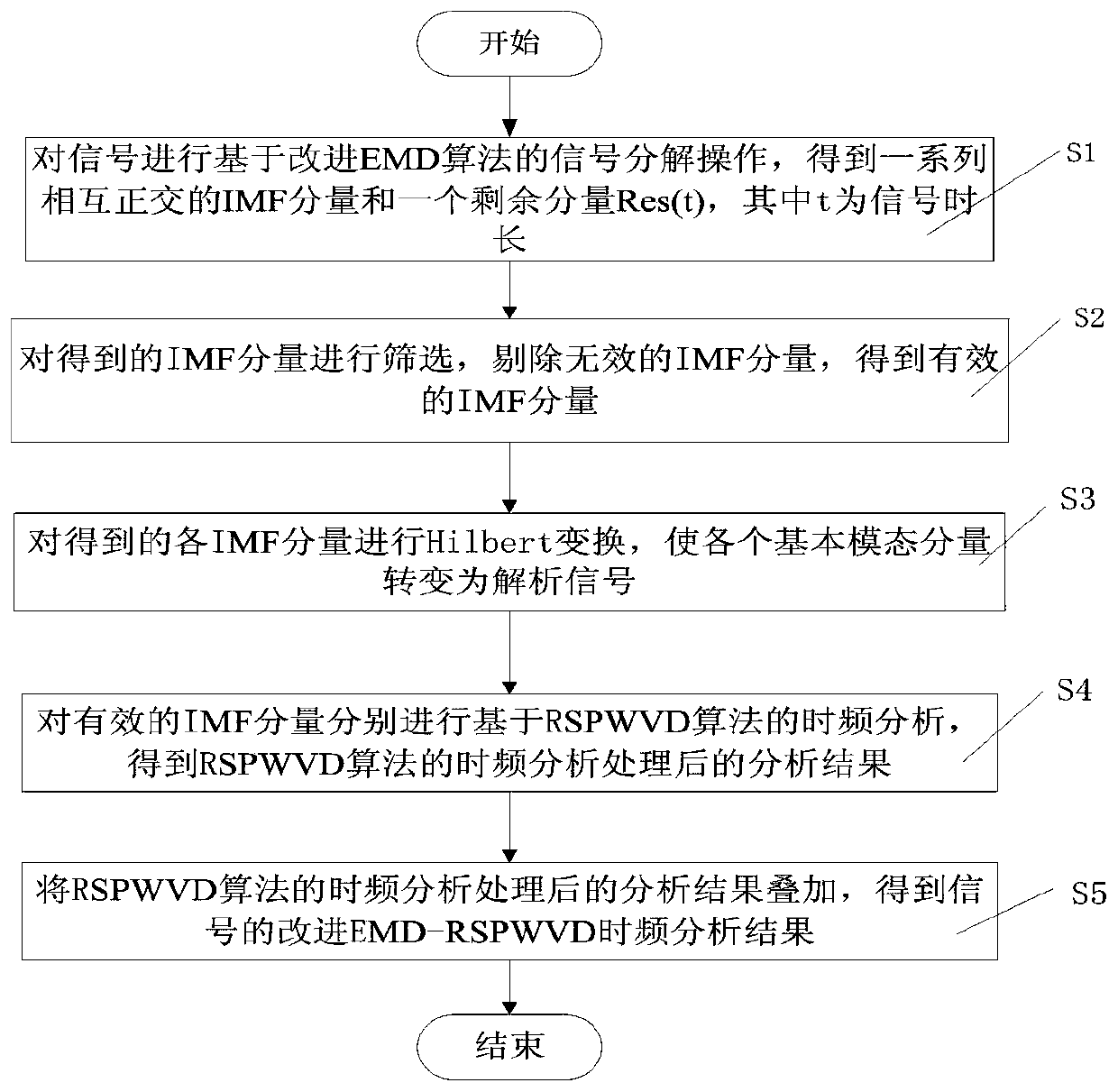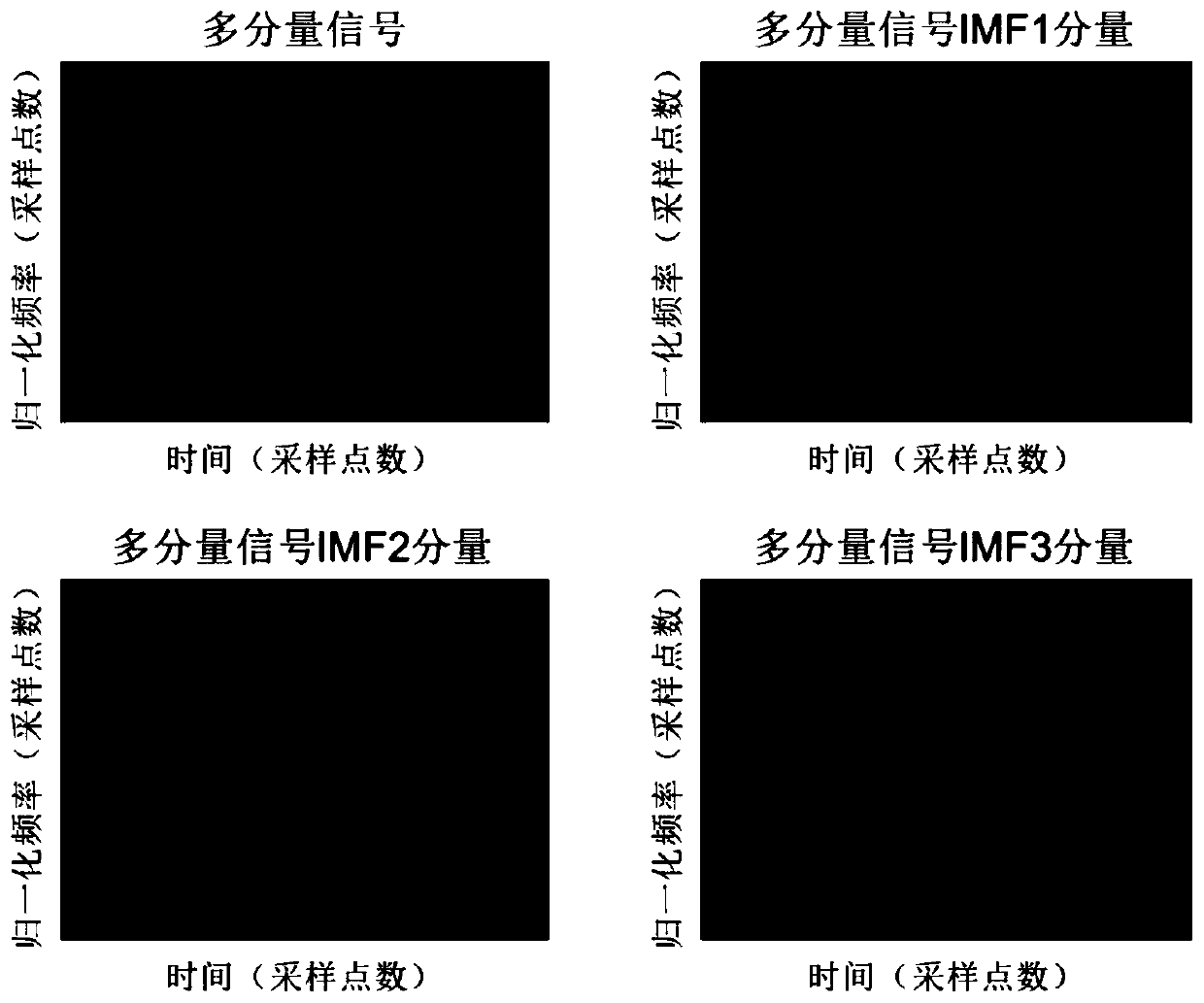Improved radar signal time-frequency analysis method
A technology of time-frequency analysis and radar signal, applied in the direction of radio wave reflection/re-radiation, utilization of re-radiation, measurement devices, etc., can solve the problem of multi-component nonlinear signal parameter separation, single-component nonlinear signal parameter estimation accuracy low, Low estimation accuracy and other issues, to achieve high time-frequency resolution and time-frequency aggregation, and optimal suppression effect
- Summary
- Abstract
- Description
- Claims
- Application Information
AI Technical Summary
Problems solved by technology
Method used
Image
Examples
Embodiment 1
[0051] Below take three kinds of signals as example to illustrate the time-frequency analysis method of the present invention, embodiment one, simulation signal is the superposition of two sinusoidal signals and a linear signal, and signal analytical formula is:
[0052]
[0053] The number of signal sampling points is 2000, figure 2 In order to adopt the time-frequency analysis results based on the improved EMD algorithm and RSPWVD algorithm. Depend on figure 2 It can be seen that this method can describe nonlinear signals and linear signals very well, and for multi-component signals, the algorithm can not only analyze a single component of the signal but also analyze the multi-component signal as a whole.
Embodiment 2
[0054] In the second embodiment, the signals are the echo signals of three moving targets in the SAR scene. The observation mode of the SAR scene adopted in the second embodiment is strip type, and the target is observed in the way of front and side view, and the carrier frequency is set to 5.3 GHz , the shortest distance between the radar and the target is set to 20000m, the radar moving speed is set to 150m / s, the Doppler bandwidth is set to 80Hz, the sampling bandwidth is set to 200Hz, the initial positions of the three moving targets are set at the imaging center, and the three The speed direction of the moving target is the distance direction, and the speeds are 3m / s, 6m / s, and 9m / s respectively. First, the echo signal is compressed in the range direction, and then multiplied by the reference signal in the azimuth direction to eliminate the Doppler change caused by the radar movement. From the results of the previous step, the appropriate azimuth line is selected for time-...
PUM
 Login to View More
Login to View More Abstract
Description
Claims
Application Information
 Login to View More
Login to View More - R&D
- Intellectual Property
- Life Sciences
- Materials
- Tech Scout
- Unparalleled Data Quality
- Higher Quality Content
- 60% Fewer Hallucinations
Browse by: Latest US Patents, China's latest patents, Technical Efficacy Thesaurus, Application Domain, Technology Topic, Popular Technical Reports.
© 2025 PatSnap. All rights reserved.Legal|Privacy policy|Modern Slavery Act Transparency Statement|Sitemap|About US| Contact US: help@patsnap.com



